GBIF-Deutschland präsentiert das neue Virtuelle Herbarium Deutschland. Das Virtuelle Herbarium ist eine gemeinschaftliche Präsentation bedeutender Herbarien Deutschlands und basiert auf modernster GBIF-Technologie. Virtuell bedeutet, dass Menschen aus Forschung, Bildung, Umweltwissenschaften sowie interessierte Bürgerinnen und Bürger digitalisierte Pflanzenbelege bequem am Rechner untersuchen können ohne die weiten Wege in die einzelnen Herbarien auf sich nehmen zu müssen.
You are here
Short descriptions of the animal groups
Lumbricidae
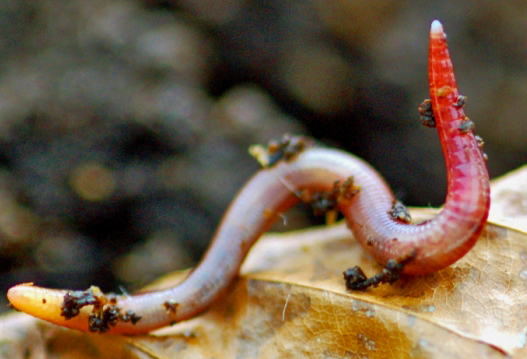 Lumbricidae (earthworms) belong to the saprophagous soil fauna. In Europe about 670 species are known; ca. 46 of them occur in Germany. Abundances and biomass vary considerably, depending on site conditions and management practices. From the very beginning of soil biology, earthworms have been considered to be the most important soil animals in many sites in Central Europe. Reasons for this are not only their high biomass but also the important functions they perform in the soil ecosystem: mechanical mixing of soil fractions, acceleration of decomposition of dead organic material, or amelioration of the water holding capacity by formation of clay-humus complexes.
Lumbricidae (earthworms) belong to the saprophagous soil fauna. In Europe about 670 species are known; ca. 46 of them occur in Germany. Abundances and biomass vary considerably, depending on site conditions and management practices. From the very beginning of soil biology, earthworms have been considered to be the most important soil animals in many sites in Central Europe. Reasons for this are not only their high biomass but also the important functions they perform in the soil ecosystem: mechanical mixing of soil fractions, acceleration of decomposition of dead organic material, or amelioration of the water holding capacity by formation of clay-humus complexes.
Earthworms can be classified into three ecological groups: mineral soil dwellers (endogeics), litter layer dwellers (epigeics), and vertical burrowers (anecics); the best-known species among the latter is Lumbricus terrestris. Referring to species occurring in Germany, a large body of autecological and ecotoxicological data is available. Their distribution is well-known in forest sites, but information on grassland and arable-field sites is deficient.
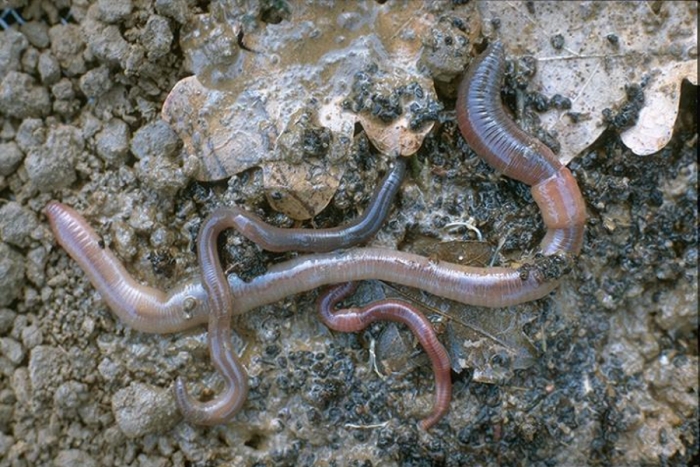 Concepts exist for assessing the ranges of reference values for biomass and species numbers under different site conditions. All domestic species can be identified with standard identification literature. To collect earthworms, a combination of hand sorting and chemical expulsion is considered the standard method. Collecting and identifying earthworms is uncomplicated. The animals are easy to conserve and can be identified without further preparation.
Concepts exist for assessing the ranges of reference values for biomass and species numbers under different site conditions. All domestic species can be identified with standard identification literature. To collect earthworms, a combination of hand sorting and chemical expulsion is considered the standard method. Collecting and identifying earthworms is uncomplicated. The animals are easy to conserve and can be identified without further preparation.
Enchytraeidae
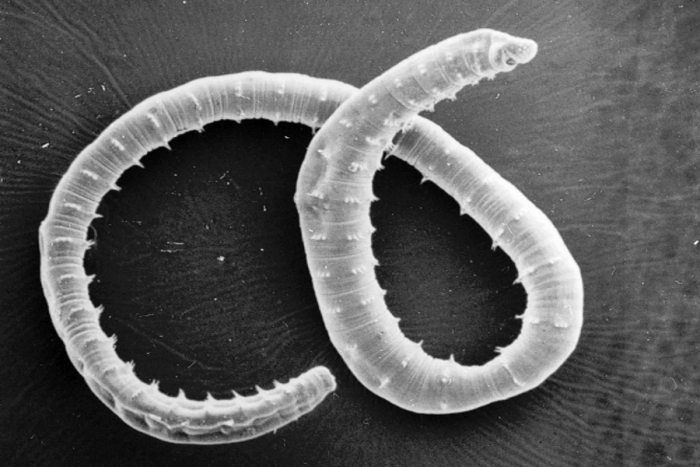 With a body diameter of about 0.2-2 mm, enchytraeids (potworms) belong to the mesofauna. About 700 species of Enchytraeidae have been described worldwide. In Europe 200-250 species are presently known. Enchytraieds are sapro-phytophagous soil organisms, feeding on dead organic material colonized by fungi and bacteria, thus accelerating the decomposition of organic substrates. Furthermore, larger enchytraeid species contribute to the formation of soil aggregates and the mixing of soil by their burrowing activity and the transport of material, although at a scale different from that of earthworms.
With a body diameter of about 0.2-2 mm, enchytraeids (potworms) belong to the mesofauna. About 700 species of Enchytraeidae have been described worldwide. In Europe 200-250 species are presently known. Enchytraieds are sapro-phytophagous soil organisms, feeding on dead organic material colonized by fungi and bacteria, thus accelerating the decomposition of organic substrates. Furthermore, larger enchytraeid species contribute to the formation of soil aggregates and the mixing of soil by their burrowing activity and the transport of material, although at a scale different from that of earthworms.
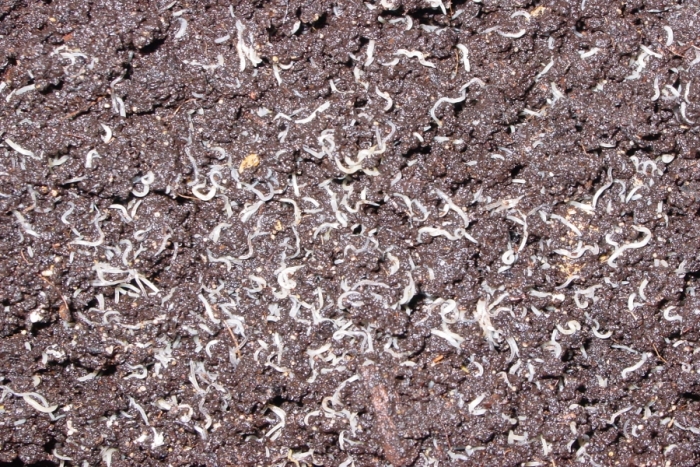 Knowledge on the autecology of species occurring in Germany has been documented in form of indicator values referring to soil reaction and soil moisture. Updated identification guides are available. Collecting enchytraeids is comparatively easy due to a standardized methodology (ISO), but the number of samples that can be taken simultaneously is limited due to the necessity of identifying specimens alive. Identification to species level requires expert knowledge.
Knowledge on the autecology of species occurring in Germany has been documented in form of indicator values referring to soil reaction and soil moisture. Updated identification guides are available. Collecting enchytraeids is comparatively easy due to a standardized methodology (ISO), but the number of samples that can be taken simultaneously is limited due to the necessity of identifying specimens alive. Identification to species level requires expert knowledge.
Chilopoda
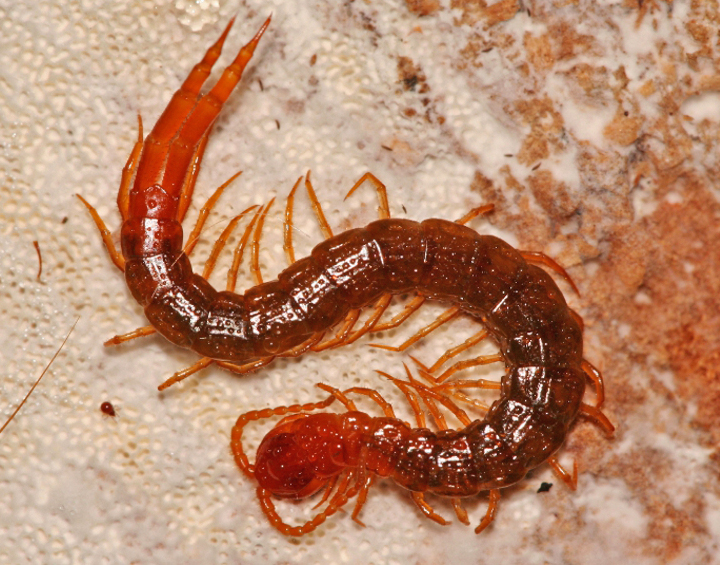 Chilopoda (centipedes), together with Diplopoda and the often neglected Pauropoda and Symphyla, belong to the myriapod Antennata (Myriapoda). Worldwide currently 3.000 species, and for Central Europe more than 500 species of Chilopoda are known. Generally all Chilopoda are furtive, hygrophilic and predatory soil organisms. They are commonly found in leaf litter, deadwood and also on tree trunks. They are nocturnal invertebrate predators, feeding on, e.g., springtails (Collembola), worms, plant lice and insect (dipteran) larvae. Chilopoda show almost no preference for certain rock or soil types, but are more influenced by prey availability and microclimate conditions (vegetation cover, humus form). The strongest preference for certain soil types is found in the euedaphic Geophilomorpha.
Chilopoda (centipedes), together with Diplopoda and the often neglected Pauropoda and Symphyla, belong to the myriapod Antennata (Myriapoda). Worldwide currently 3.000 species, and for Central Europe more than 500 species of Chilopoda are known. Generally all Chilopoda are furtive, hygrophilic and predatory soil organisms. They are commonly found in leaf litter, deadwood and also on tree trunks. They are nocturnal invertebrate predators, feeding on, e.g., springtails (Collembola), worms, plant lice and insect (dipteran) larvae. Chilopoda show almost no preference for certain rock or soil types, but are more influenced by prey availability and microclimate conditions (vegetation cover, humus form). The strongest preference for certain soil types is found in the euedaphic Geophilomorpha.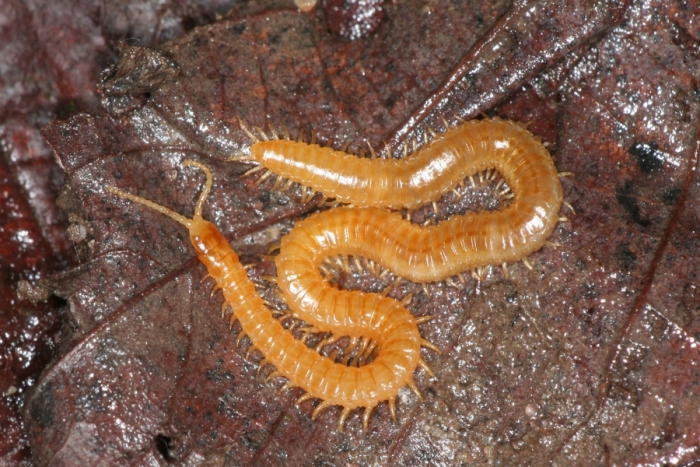
Thus, they are more suitable as indicators for soil conditions than the epedaphic Lithobiomorpha. However, the high biological indicatory importance of this animal group predominantly emerges at the community level, i.e., species composition and their changes in time and space can indicate changes in the local soil structure.
Diplopoda
Like Chilopoda, Diplopoda (millipedes) belong to the myriapod Antennata (Myriapoda). With more than 12,000 known species worldwide, Diplopoda are one of the most important animal groups for soil functions due to their saprophagous way of life.
 Especially members of the families Julidae and Glomeridae play a crucial role in organic litter metabolism. In soils where earthworms are missing (e.g. sandy soils), Diplopoda can almost completely take over their role as litter decomposers, soil mixers and humus accumulators.
Especially members of the families Julidae and Glomeridae play a crucial role in organic litter metabolism. In soils where earthworms are missing (e.g. sandy soils), Diplopoda can almost completely take over their role as litter decomposers, soil mixers and humus accumulators.
Diplopod species partly show narrow preferences for characteristic habitat types and are therefor good indicators for various local soil conditions (e.g. calcium carbonate content).
Isopoda (Oniscidea)
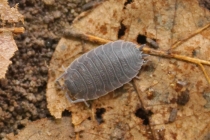 Woodlice or Oniscidea belong to one of the crustacean groups most successfully adapted to terrestrial life They occur from littoral regions up to high mountainous areas, where the vegetation zone is still present. In Germany more than 50 species occur, worldwide more than 3600 species are known. A biodiversity hotspot of the group is located in southeastern Europe, where the most diverse terrestrial isopod fauna can be found. Woodlice occur in the upper layers of humid soil, some smaller specimens also live in deeper layers with a loose soil structure.
Woodlice or Oniscidea belong to one of the crustacean groups most successfully adapted to terrestrial life They occur from littoral regions up to high mountainous areas, where the vegetation zone is still present. In Germany more than 50 species occur, worldwide more than 3600 species are known. A biodiversity hotspot of the group is located in southeastern Europe, where the most diverse terrestrial isopod fauna can be found. Woodlice occur in the upper layers of humid soil, some smaller specimens also live in deeper layers with a loose soil structure.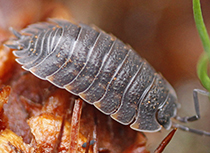 By feeding on fungi and other rotting vegetational material, terrestrial isopods are mainly responsible for the decomposition of organic material in nature.
By feeding on fungi and other rotting vegetational material, terrestrial isopods are mainly responsible for the decomposition of organic material in nature.
The biology of most species is only poorly known, only the cosmopolitan species Porcellio scaber (common rough woodlouse) and Armadillidium vulgare (common pill woodlouse or pillbug) have been more intensely studied.
Collembola
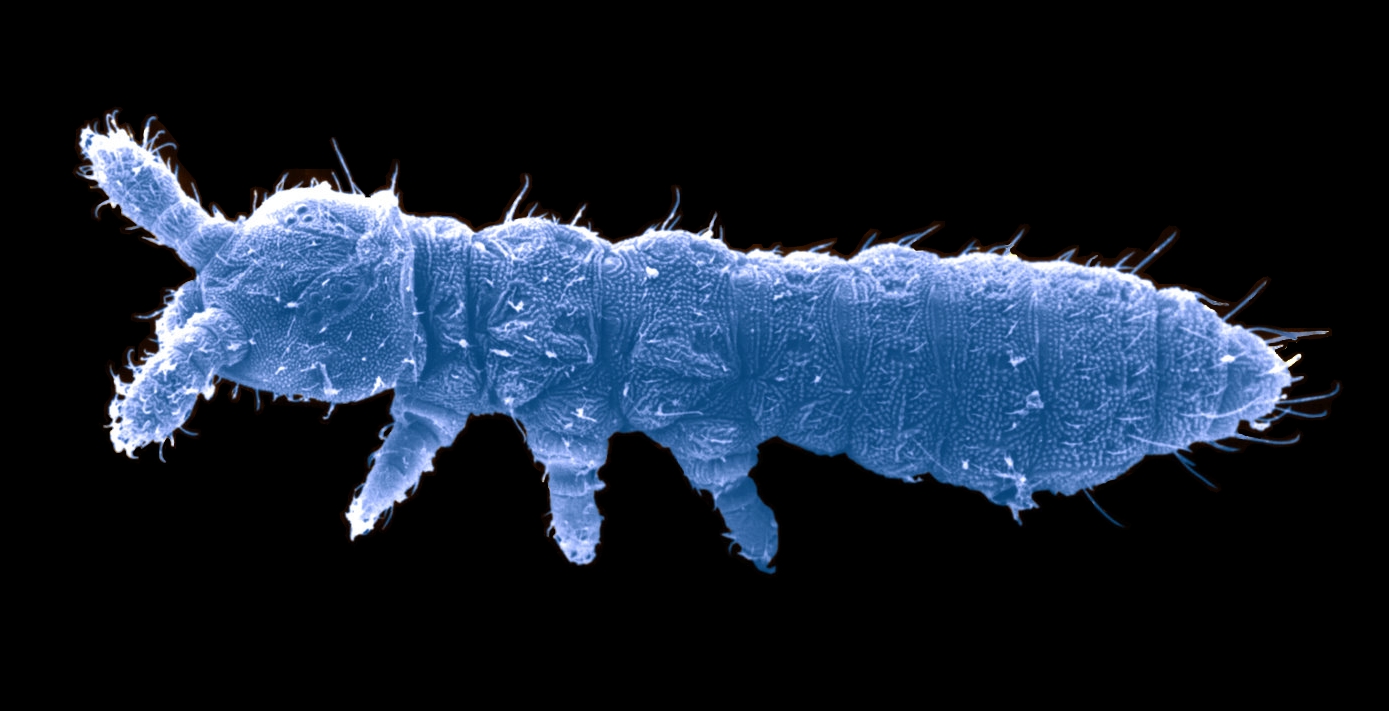 Springtails (Collembola) are the numerically most important hexapod species group in terrestrial ecosystems. Currently (2011) about 8000 species have been described worldwide. Approximately 400 to 500 species are known from Central European countries. Due to their small body size of about 0.5-5 mm, Collembola are classified as microarthropods, being part of the soil mesofauna. They are found in almost all soil habitats in average densities of 10,000 to 70,000 individuals per m2, depending on habitat type and location. Collembola mainly live on the soil surface, the litter and the upper 20 cm of the humic mineral soil and are thus classified according to three different life-form types: epedaphic
Springtails (Collembola) are the numerically most important hexapod species group in terrestrial ecosystems. Currently (2011) about 8000 species have been described worldwide. Approximately 400 to 500 species are known from Central European countries. Due to their small body size of about 0.5-5 mm, Collembola are classified as microarthropods, being part of the soil mesofauna. They are found in almost all soil habitats in average densities of 10,000 to 70,000 individuals per m2, depending on habitat type and location. Collembola mainly live on the soil surface, the litter and the upper 20 cm of the humic mineral soil and are thus classified according to three different life-form types: epedaphic 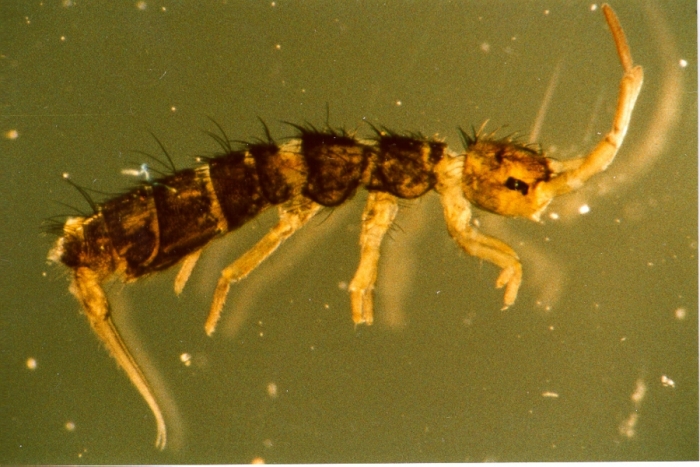 (living on the soil surface), hemiedaphic (in the upper boundary horizons of litter and soil) and euedaphic (in the pore space between particles of soil or sand). They feed predominantly on layers of bacteria and algae, fungal hyphae and occasionally decaying plant material. The taxonomy of Collembola is relatively well known, although their systematics is still changing. Since 1994, the "Synopses on Palaearctic Collembola" provide up-to-date determination keys that also summarize autecological data of individual species.
(living on the soil surface), hemiedaphic (in the upper boundary horizons of litter and soil) and euedaphic (in the pore space between particles of soil or sand). They feed predominantly on layers of bacteria and algae, fungal hyphae and occasionally decaying plant material. The taxonomy of Collembola is relatively well known, although their systematics is still changing. Since 1994, the "Synopses on Palaearctic Collembola" provide up-to-date determination keys that also summarize autecological data of individual species.
Due to their limited dispersal ability and their close connection to the soil environment, euedaphic species have the greatest significance as bioindicators for edaphic habitats. However, widespread species with lesser habitat preferences are usually the most dominant 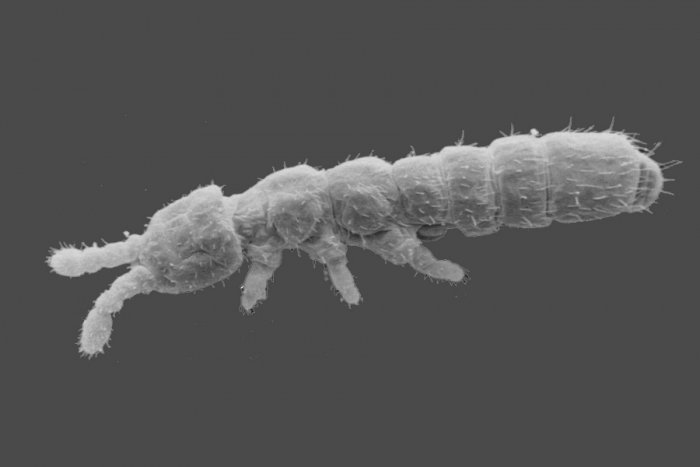 species in most soils, while more stenoecious species with their large predictive value as bioindicators (being more susceptible to changes in environmental conditions) are usually found in lower abundances, with the exception of very specific habitat types. Thus, the investigation of both the species composition and the associated community structures (dominance relationships) of a given soil sample is necessary to recognize spatial and temporal changes in the soil at small scales.
species in most soils, while more stenoecious species with their large predictive value as bioindicators (being more susceptible to changes in environmental conditions) are usually found in lower abundances, with the exception of very specific habitat types. Thus, the investigation of both the species composition and the associated community structures (dominance relationships) of a given soil sample is necessary to recognize spatial and temporal changes in the soil at small scales.
Oribatida
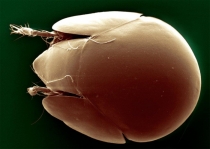 Oribatid mites (also known as moss or beetle mites) form a suborder of mites (Arachnida: Acari: Oribatida) with more than 9,000 known species. Within Germany more than 630 species have been identified thus far. They live in litter and humus layers of soil, particulary in forests, where more than 90 species and 100,000 individuals per square meter can be found. They are also frequently found in grasslands, field margins, as well as freshwater and semi-aquatic habitats, each with up to 50 species. The common name moss mites derives from special Oribatida communities in microhabitats such as moss and lichens on tree trunks and stones.
Oribatid mites (also known as moss or beetle mites) form a suborder of mites (Arachnida: Acari: Oribatida) with more than 9,000 known species. Within Germany more than 630 species have been identified thus far. They live in litter and humus layers of soil, particulary in forests, where more than 90 species and 100,000 individuals per square meter can be found. They are also frequently found in grasslands, field margins, as well as freshwater and semi-aquatic habitats, each with up to 50 species. The common name moss mites derives from special Oribatida communities in microhabitats such as moss and lichens on tree trunks and stones.
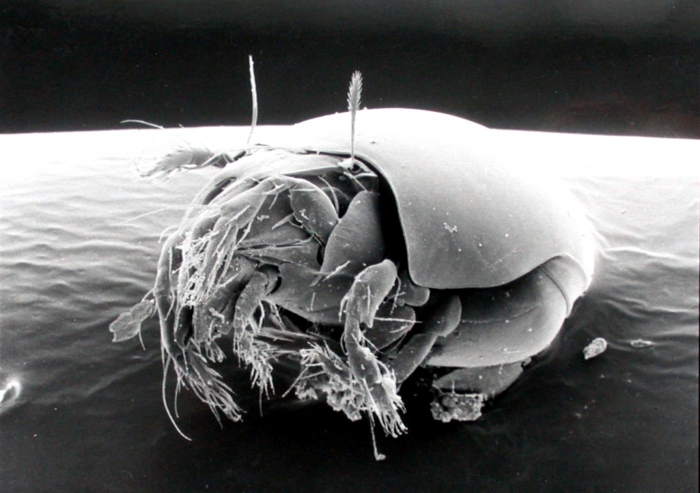 Within the soil fauna, moss mites play a prominent role in the decomposers / saprophyte food web due to their high population densities. They are ecologically and nutritionally classified as fungi- and detritivor (saprophagous). However, they can also live necro-/ coprophagously, and a few predatory species are known.
Within the soil fauna, moss mites play a prominent role in the decomposers / saprophyte food web due to their high population densities. They are ecologically and nutritionally classified as fungi- and detritivor (saprophagous). However, they can also live necro-/ coprophagously, and a few predatory species are known.
Oribatid mites belong to the mesofauna with a body size between 0.14 to 2 mm. Their sampling is relatively easy using standardized methods. Preparation and determination, however, require a high expenditure of time, expertise and experience. 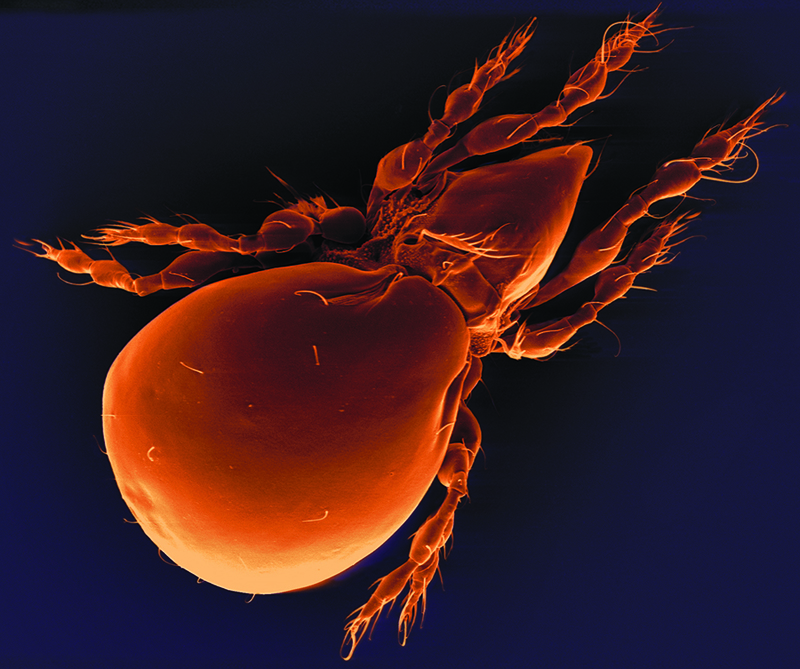 Already in the 1920s usefull data were generated for Germany and adjacent areas and have been used within edaphobase.
Already in the 1920s usefull data were generated for Germany and adjacent areas and have been used within edaphobase.
The presence of Oribatida species at a specific site is determined by mainly habitat type, land use (forest, grassland, arable land), climatic conditions, moisture, pH-value, nutritional value and humus content of the soil. Thus single Oribatida species or species-groups can indicate specific location factors or conditions. Providing sufficient sampling, one can identify differential or indicator species when the species composition of the Oribatida community of a site and the community structure (abundance, dominance, continuity) is known.
Gamasina
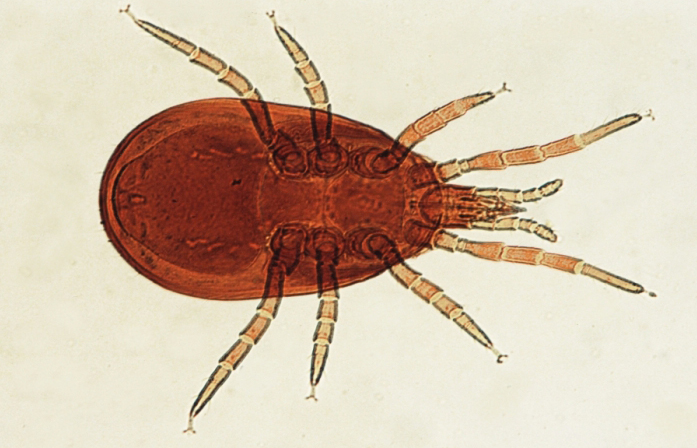 Gamasina (gamasina mites) belong to the mesostigmatic mites, forming an important cohort among them. The majority of gamasine mites are predators; some families, however, parasitize on other arthropods or vertebrates. Their body length ranges from about 300 µm to app. 2 mm. Prominent members of gamasine mites are the Varroa mite (Varroidae), parasitizing on honey bees, and the poultry red mite (Dermanyssus gallinae). In central Europe 800 to 1000 of soil dwelling gamasine species are assumed.
Gamasina (gamasina mites) belong to the mesostigmatic mites, forming an important cohort among them. The majority of gamasine mites are predators; some families, however, parasitize on other arthropods or vertebrates. Their body length ranges from about 300 µm to app. 2 mm. Prominent members of gamasine mites are the Varroa mite (Varroidae), parasitizing on honey bees, and the poultry red mite (Dermanyssus gallinae). In central Europe 800 to 1000 of soil dwelling gamasine species are assumed.
Because of their predatory life style, the Gamasina do not have a direct influence on litter decomposition. Furthermore, their influence on prey populations is controversial. Beyond question, however, is their large contribution to mite biomass and a high metabolic activity due to their high mobility. Therefore, the Gamasina comprise one of the most important mite groups in terms of energy flow.
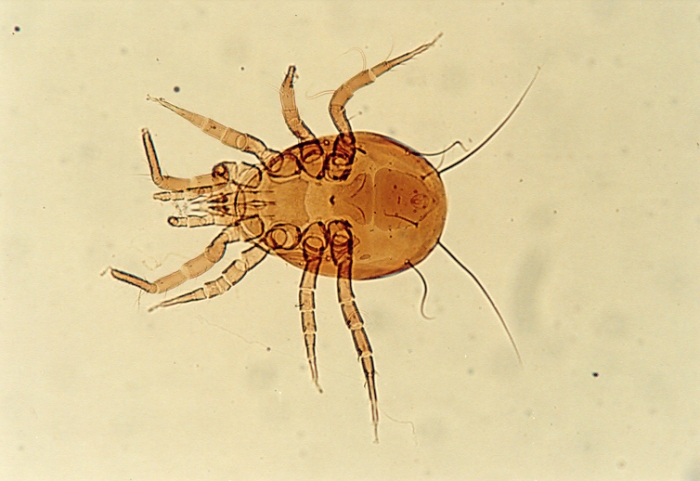 In comparison to other soil arthropods, Gamasina have a relatively homogeneous distribution in forest soils. This allows reliable recording of population densities even by small numbers of soil samples. Moreover, central European Gamasina have been well studied taxonomically in past. This has resulted in an extensive literature record, including elaborate identification keys facilitating the evaluation of mite samples.
In comparison to other soil arthropods, Gamasina have a relatively homogeneous distribution in forest soils. This allows reliable recording of population densities even by small numbers of soil samples. Moreover, central European Gamasina have been well studied taxonomically in past. This has resulted in an extensive literature record, including elaborate identification keys facilitating the evaluation of mite samples.
Nematoda
Nematodes (threadworms) are the richest group within the kingdom of multicellular organisms regarding number of species and individuals. 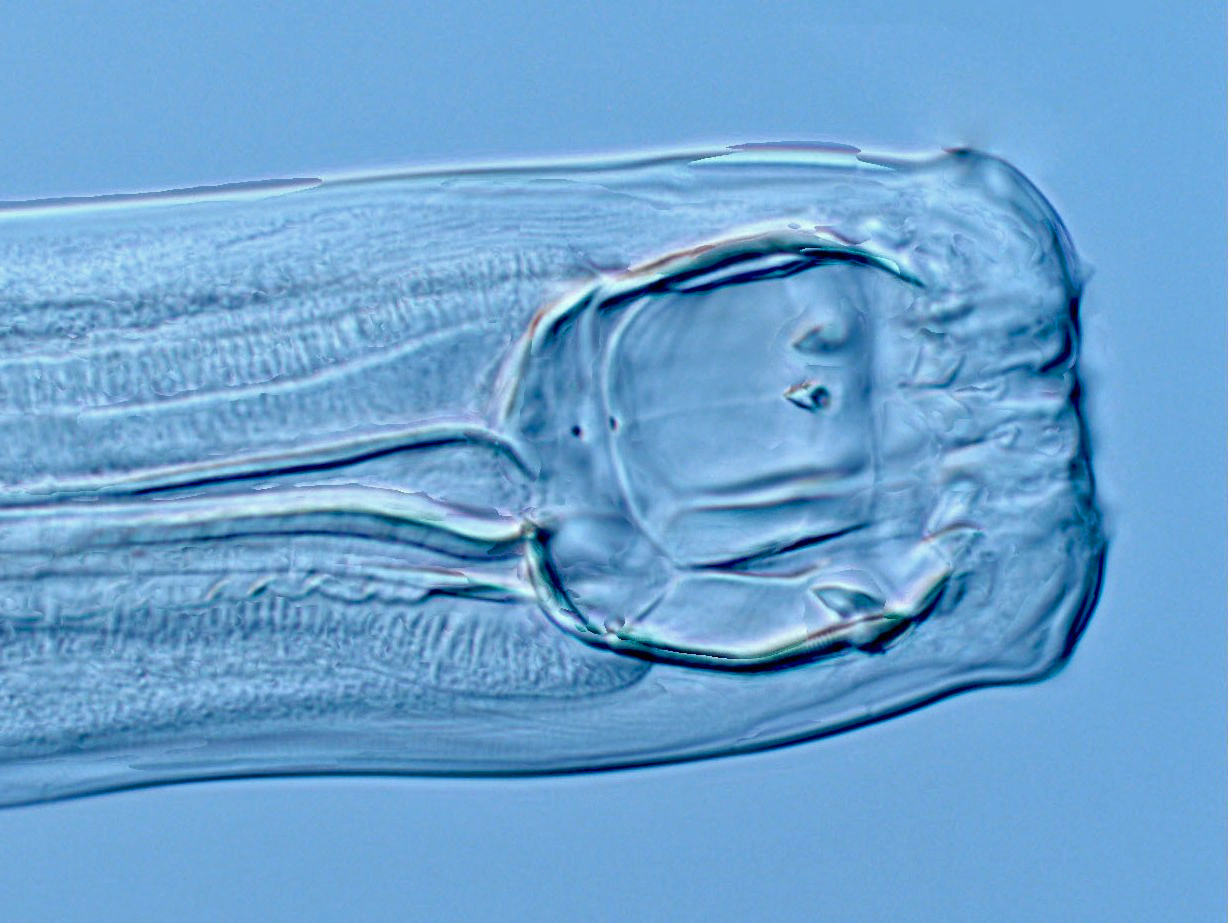 They can be found in almost every terrestrial, limnic and marine biotope and subsist on plants, bacteria, fungi, fungal spores or are predatory on other animals and even nematodes.
They can be found in almost every terrestrial, limnic and marine biotope and subsist on plants, bacteria, fungi, fungal spores or are predatory on other animals and even nematodes.
Free living, non-parasitic nematodes are of vital importance for the functionality of soils. They vary in sensitivity to pollutants and ecological disturbances and are therefore well suited as ecological indicators for monitoring and evaluation of agricultural as well as natural areas.
 German
German